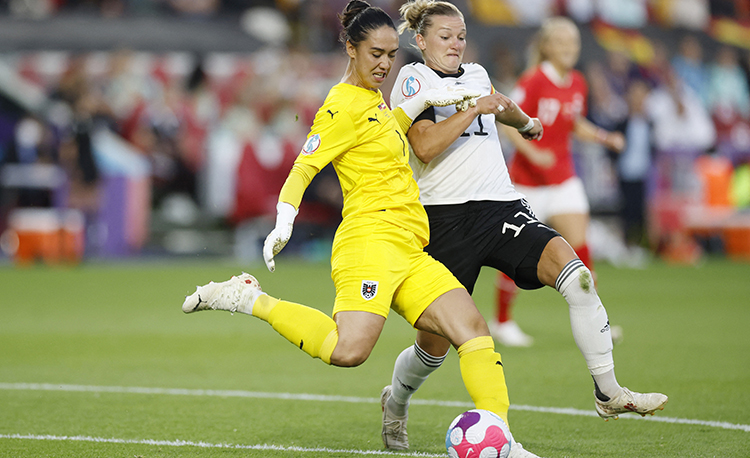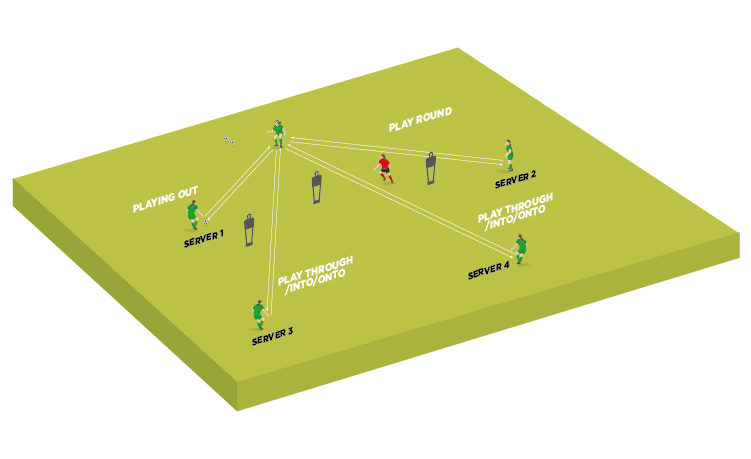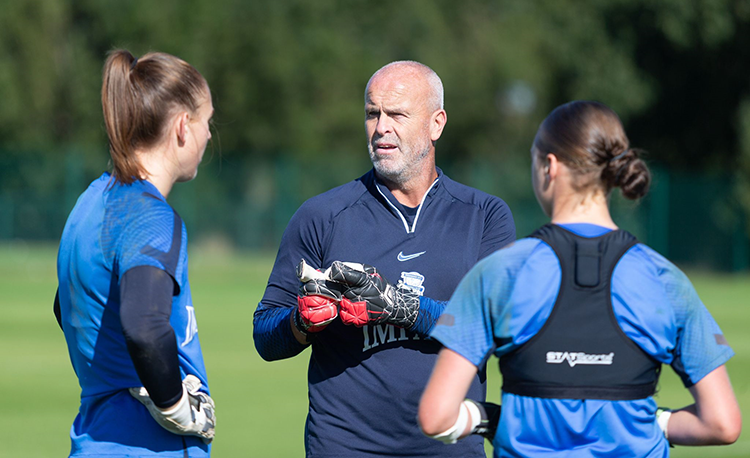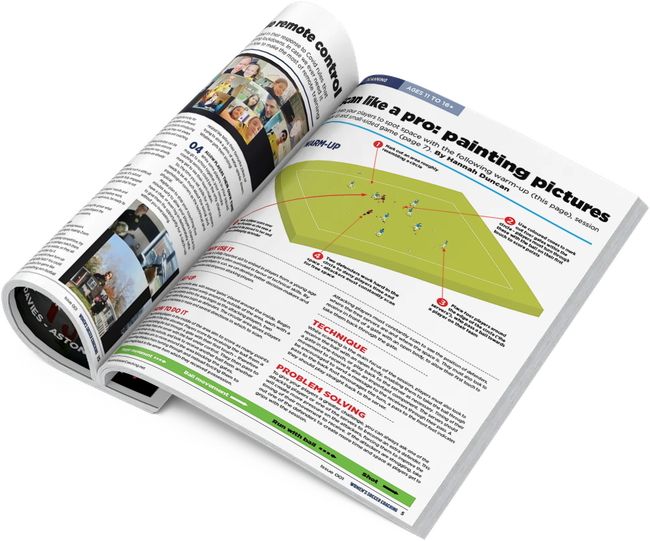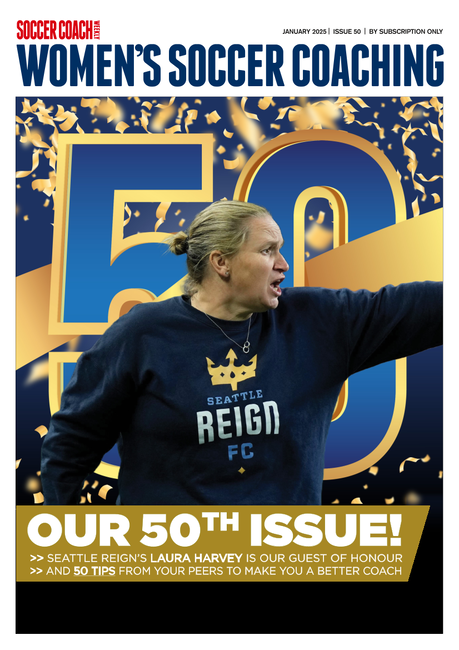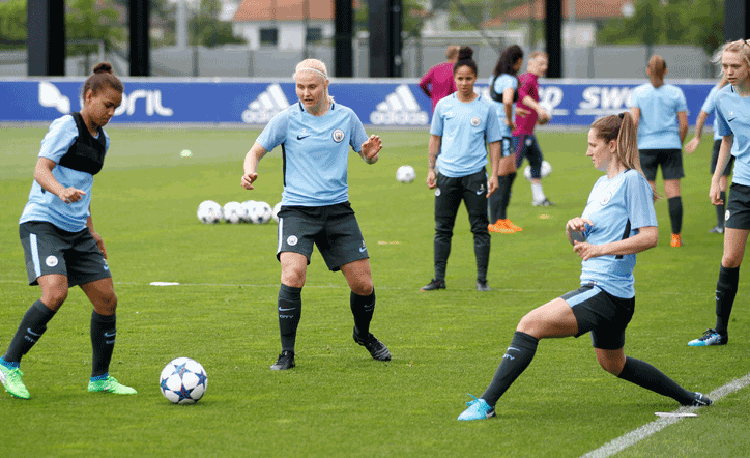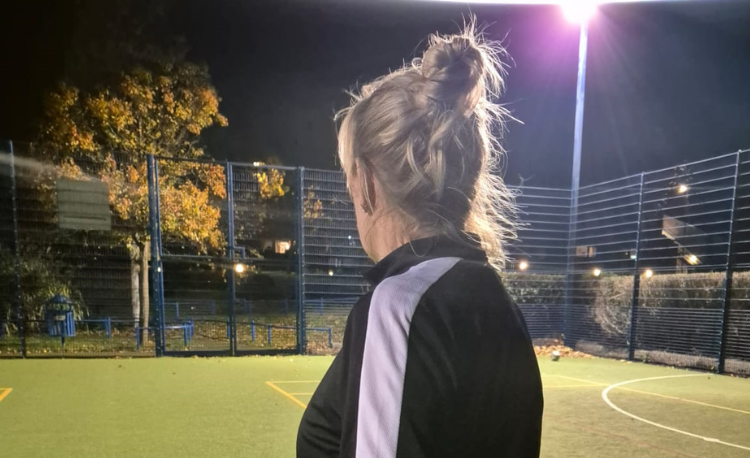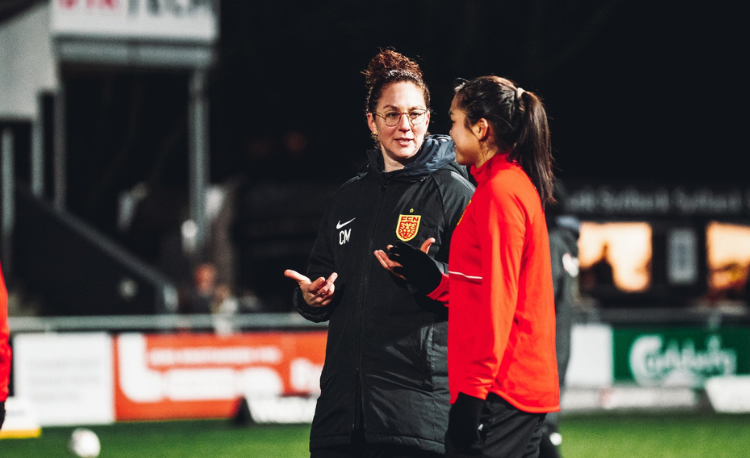You are viewing
1 of your 3 free articles
How to improve goalkeeper distribution
The demands of the modern game mean there needs to be greater emphasis on the development of goalkeepers’ ball management and mastery. Here’s how to provide it
No role in soccer has evolved as much over the past 25 years than the goalkeeper.
There is now an expectation for them to be as good with the ball as they are catching it, due to the higher number of ball contacts with the feet (70-80%) compared to hands.
It is interesting, therefore, to still see a lot of goalkeeper training sessions which are more heavily weighted towards the development of their hand skills.
I am not suggesting we need to go ‘feet heavy’ – just that there needs to be greater emphasis on the development of goalkeepers’ ball management and mastery, focusing on these key areas:
• Where: the areas of the pitch the goalkeeper needs to move the ball to play out, round, through, into, onto and beyond.
• When: recognising the urgency, or lack of, with which the ball needs to be shared with a team-mate, depending on the level of pressure being applied by the opposition.
• Who: which player the pass is intended for and that player’s ability to deal with it.
• Why: the context of the situation and an understanding of the opposition’s game strategy, in particular how they have set up their press.
• How: the specific technique to be executed and the terminology used to describe a particular type of pass - side foot, drill, wedge, lofted, driven etc.
"There needs to be greater emphasis on goalkeepers’ ball management..."
We must also remember that, although we are focussing on distribution with the feet in this particular article, the goalkeeper will also start the build phase of attacks by throwing the ball out.
To enable the goalkeeper to cope with these distribution demands, it is hugely important that we adopt a more holistic approach to their development, through the ‘five elements of development’ - technical, tactical, physical, psychological and social.
This will help them make better informed decisions when looking to play out, help the team build attacks and retain possession.
It is important, therefore, that a goalkeeper has the following:
• Great anticipation: awareness of game situation and context.
• Awareness: an understanding of the occupation of space and the opposition press - same side, inside, opposite side, etc.
• Recognition: where and when to create overloads.
• Game intelligence: knowing when to offer help, problem solve, give solutions and when to offer continuity and progression by keeping the game flowing.
• Distribution skills: effective and efficient distribution range and execution.
I would add that it is also very important the goalkeeper coach isn’t precious or possessive over their goalkeepers during team training sessions, and is comfortable with them being integrated into the main group practice.
The head coach and other technical coaching staff must also recognise the importance of having the goalkeeper take part in game-based team practices, whether that is in a skill/functional format (such as a rondo or possession situation), small sided games, or phases of play.
All of the above will allow the goalkeeper to develop:
• Relationships with teammates: Communication, understanding of teammates’ capabilities and characteristics, building an understanding of their own importance in the development of the team and building of trust between teammates.
• Tactical awareness: Being aware of their role within the team’s structure, in and out of possession and during transitional moments. They must have a constant understanding of what is happening on, around and away from the ball. Checking and scanning is pivotal for goalkeepers, but knowing when and how is a skill in itself, developed quicker through contextual situations and being immersed in game environments as often as possible.
• Game management: understanding how to manage and manipulate the game tempo and momentum swings.
• Handling pressure: developing technical skills when under game-type pressure, based on the processing of detail and information from continually changing pictures.
Working in the women’s game since 2013, at both international (England U15s-U23s) and club level (Birmingham City and Bristol City), I have witnessed huge progress in the in-possession aspect of the game.
Goalkeepers are now supported much more holistically through all stages of their development, in order to prepare them not only for when the team is out-of-possession and to be defenders of the goal, penalty area and space around them, but to give them greater scope and trust from teammates and coaches as a creator of attacks.
Having spoken to the goalkeepers I work with on a daily basis, and coaching colleagues, I have identified some issues we collectively feel may have hindered the development of female goalkeepers’ distribution, and which are now at a much more evolved level of competency. These are outlined in the panel below.
It is vital to now recognise the position of goalkeeper is going to become increasingly more important in the female game and that, psychologically, it has always been a very demanding role.
With the added pressure of successfully building attacks, sometimes under huge pressure, those demands are now being taken to a whole new level.
Therefore, in order to help the goalkeeper, they should be integrated into practices with the team more frequently in order for them to further enhance the distribution skillset required.
This will strengthen the trust in them to successfully build attacks, be trusted with the ball at their feet and be an extremely valuable asset to their team’s attacking output.
The goalkeeper is now not simply the last line of defence, but increasingly the first point of attack.
FOUR WAYS FEMALE GOALKEEPING HAS IMPROVED
• Lack of opportunity to practice regularly enough, due to limited amount of training sessions, particularly at younger age groups: Now the game has turned professional, and many clubs have youth development programmes, goalkeepers can spend a lot more time focusing on bespoke individual development programmes (IDPs) and have more opportunities to play competitive games across the phases.
• Over-emphasis on the goalkeeper just trying to keep the ball out of the net and thus too much focus on the out of possession (OOP) side of their game in the early stages of development: Technical OOP fundamentals should be introduced in the early stages, but so should the opportunity to develop ball mastery and building confidence in the use of both feet. Two-footed goalkeepers have a greater advantage in the modern game compared to those who rely on their stronger foot constantly.
• A lack of quality goalkeeper coach provision across all tiers of the game: The level of goalkeeper coach provision has developed hugely in the last 10-15 years, meaning a greater level of expertise is now supporting goalkeepers in the women’s game. At the highest levels of the female game, clubs are now recognising the importance of hiring full-time goalkeeper coaches as most clubs in the men’s game do.
• The levels of gameplay itself, the lack of inclusion into practice and importance and trust in the goalkeeper by both teammates and coaches: The growth of the female game globally has driven the need for more informed coaches, who now encourage most to try and play the game in the correct way, and give goalkeepers licence to play out from the back.
Related Files
Newsletter Sign Up
Newsletter Sign Up
Discover the simple way to become a more effective, more successful soccer coach
In a recent survey 89% of subscribers said Women's Soccer Coaching makes them more confident, 91% said Women's Soccer Coaching makes them a more effective coach and 93% said Women's Soccer Coaching makes them more inspired.
*includes 3 coaching manuals
Get Inspired
All the latest techniques and approaches
Women's Soccer Coaching offers proven and easy to use soccer drills, coaching sessions, practice plans, small-sided games, warm-ups, training tips and advice.
We've been at the cutting edge of soccer coaching since we launched Soccer Coach Weekly in 2007, creating resources for the grassroots youth coach, following best practice from around the world and insights from the professional game.
